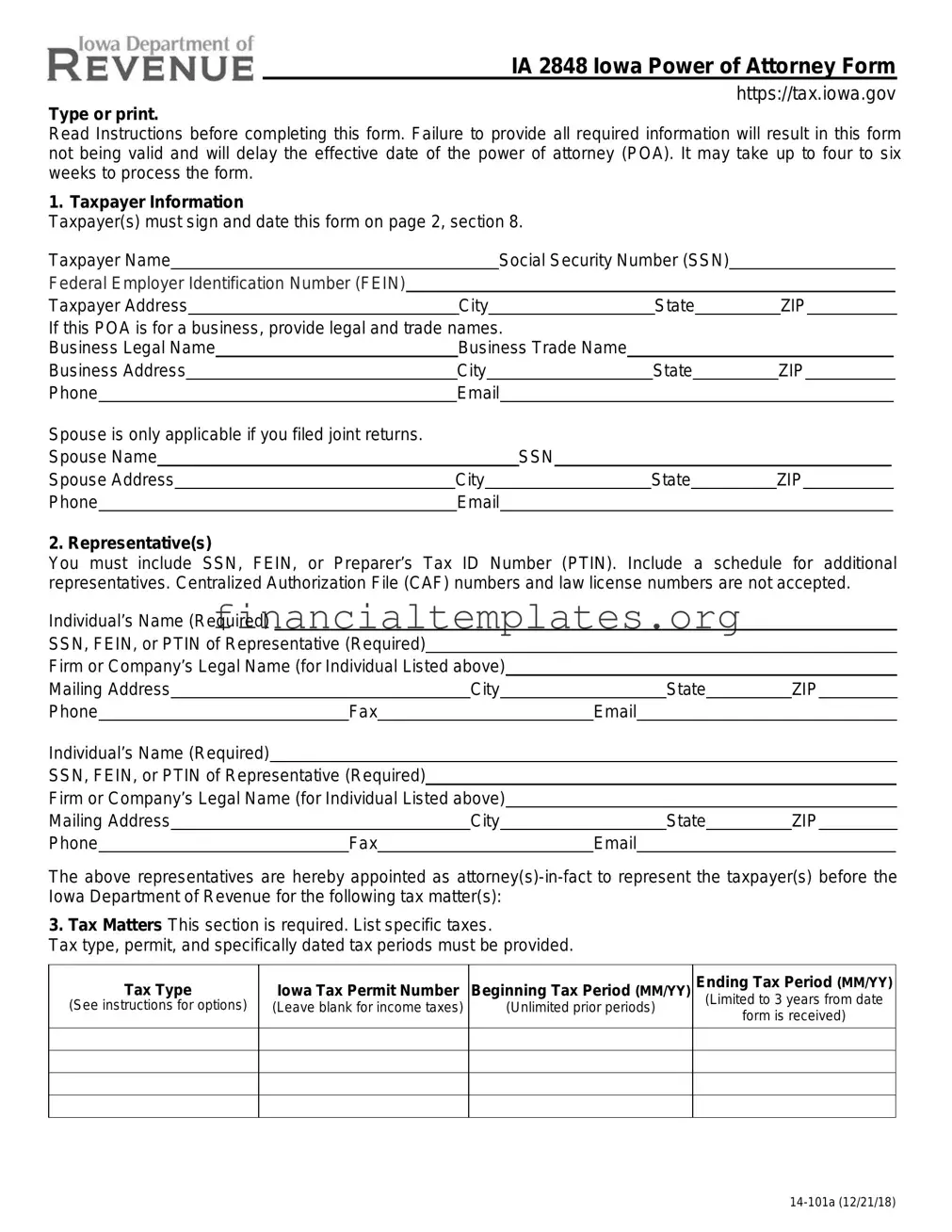IA 2848 Iowa Power of Attorney Form, page 2
4.Acts Authorized (Do not name additional representatives in this section.)
Representatives are authorized to receive and inspect confidential tax information and to perform any and all acts with respect to the tax matters described in section 3. For example, the representative may negotiate, sign any agreements, consents, or other documents, and represent the taxpayer(s) in any informal and formal proceeding involving the Department. See Instructions for full list of authorized activities. The authority does not include the power to receive refund checks, unless specifically added in section 5 below. List any specific additions or deletions to the acts otherwise authorized in this power of attorney:
Additions:
Deletions:
5. Receipt of Refund Checks
If you want to authorize a representative named in section 2 to receive, but not to endorse or cash, refund
checks, initial here |
|
and list the name of that representative below. |
Name of representative to receive refund check(s)
6. Notices and Communications
Original notices and other written communications will be sent to you and the taxpayer. A copy will be sent to the first representative listed in section 2.
7. Retention or Revocation of Prior Power(s) of Attorney
The filing of this power of attorney automatically revokes all earlier power(s) of attorney on file with the Iowa Department of Revenue for the same tax matters and tax periods covered by this document.
If you do not want to revoke a prior power of attorney, check here □

You must attach a copy of any power of attorney you want to remain in effect.
8. Signature of Taxpayer(s)
If a tax matter concerns a joint individual income tax return, both spouses are required to sign this form, if represented by the same individual(s).
If signed by a corporate officer, partner, member, guardian, tax matters partner, executor, receiver, administrator, or trustee on behalf of the taxpayer: I certify that I have the authority to execute this form on behalf of the taxpayer.
If the taxpayer is an entity with more than one owner or member, a second signature of a person authorized to legally bind the entity is required.
If this form is not signed and dated, this power of attorney will not be valid. The form will be returned to you.
Signature ______________________________ |
Date |
____________________________________ |
Print Name |
____________________________ |
Title _____________________________________ |
Signature ______________________________ |
Date |
____________________________________ |
Print Name |
____________________________ |
Title _____________________________________ |
Mail to:
Registration Services
Iowa Department of Revenue
PO Box 10470
Des Moines IA 50306-0470
Or fax to: 515-281-3906




